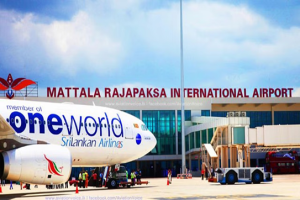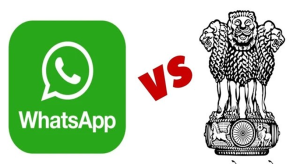Raksha Mantri Shri Rajnath Singh holds telephonic conversation with Defence Minister of Republic of Korea, Reviews progress in bilateral defence cooperation
- Raksha Mantri Shri Rajnath Singh today spoke over telephone with Minister of National Defence of Republic of Korea (RoK) Mr Jeong Kyeong-Doo.
- The two Defence Ministers had discussions on issues pertaining to the COVID-19 pandemic situation. Shri Rajnath Singh informed Mr Jeong Kyeong-Doo on India’s contribution to international efforts against COVID-19 and discussed areas of mutual cooperation in the global fight against the pandemic. The Ministers agreed to work together to deal with the complex challenges posed by this pandemic.
- During the telephonic conversation, the Ministers reviewed the progress on various bilateral defence cooperation initiatives and expressed commitment to further promote defence cooperation engagements between the Armed Forces. It was also agreed to take forward the agreements in the field of defence industry and defence technology cooperation between the two countries.
- Views on the regional developments of shared security interests were also shared during the telephonic call.
Boeing Delivers Five Apache Combat Helicopters to India Amid Heightened Tensions with China
- India has urged its military equipment suppliers to expedite the delivery of weapons systems, as tensions along the 4,057 km Line of Actual Control have escalated since April. The US, France and Russia have agreed to supply military systems within three months once an order is placed, say government sources.
- Boeing, which had been contracted to produce Apaches for the Indian Air Force, has announced that all five of the multi-role helicopters have been delivered.
- The attack helicopter, in addition to its enhanced ability to shoot ‘fire and forget’ anti-tank guided missiles, air-to-air missiles, rockets and other ammunition, is also versatile in conducting network-centric aerial combat due to its modern electronic warfare system.
- “We’re happy to have completed delivery of the 22 AH 64-E Apache and 15 Chinook helicopters to India,” the company said on Friday. The five helicopters have been delivered in one consignment to the Indian Air Force (IAF) at Hindon air base, near the national capital Delhi. Earlier in March, Boeing handed over the last five of 15 CH-47F (I) Chinook heavy-lift helicopters it had contracted to sell India.
- “With this delivery of military helicopters, we continue to nurture this partnership and are fully committed to working closely with India’s defence forces to deliver the right value and capabilities to meet their operational needs,” Surendra Ahuja, managing director, Boeing Defence India said in a statement.
- Boeing has delivered nearly 2,500 Apache helicopters to 16 nations to date, including the US, the Netherlands, the United Kingdom, Greece, Japan, India, Singapore, South Korea, and Saudi Arabia.
- The American-made helicopters feature two high-performance turboshaft engines and a maximum cruise speed of 284 kilometres per hour. The Apache can carry a maximum of 16 Hellfire missiles, giving it unprecedented firepower.
- Last September, the IAF inducted eight Apache helicopters at Pathankot airbase to guard the nation’s border with Pakistan.
- India finalised its order with Boeing for the production, training, and support of 22 AH-64E Apache and 15 CH-47F(I) Chinook helicopters in September 2015. Earlier this year, India and the US signed a contract for the acquisition of six Apaches for the Indian Army during American President Donald Trump’s visit to New Delhi.
- The Indian defence ministry has also urged countries like Russia, France, and Israel to expedite contractual deliveries of military equipment they had agreed to undertake in the past. Defence Minister Rajnath Singh, during his visit to Moscow in June, confirmed that Russia will supply some of the weapon systems to India at an early date.
- Indian government sources confirmed to Sputnik that the Quick Reaction surface-to-air missile system will be delivered to India by the Russian firm at an early date. Later this month, the first batch of Rafale fighter jets will also arrive to be deployed along the Chinese border.
- India and China have been engaged in a bitter border stand-off in several places, and there diplomatic efforts underway to diffuse the tension amid the withdrawal of troops by the two sides in Ladakh region.
In clear message to China, India to invite Australian Navy for Malabar drill
- India plans to invite Australia to join the annual Malabar naval exercise that has so far included just Japan and the U.S., in a move that could risk China’s ire.
- The decision to include Australia in the drills — the first time all members of the regional grouping known as the Quad will be engaged at a military level — comes as Beijing and New Delhi are caught up in their worst border tensions in four decades. The exercise will bring together the navies of India, Japan, Australia, and the U.S. in the Bay of Bengal at the end of the year, according to senior Indian officials who asked not to be identified, citing rules.
- New Delhi is expected to clear the way next week for a formal invitation to Australia following final government clearance and consultations with the U.S. and Japan, the officials said.
- A spokesperson for Australia’s defence department said in an emailed statement on Friday that while the nation was yet to receive an invitation to Exercise Malabar, “Australia sees value in participating in quadrilateral defense activities in order to increase interoperability and advance our collective interests in a free, open and prosperous Indo-Pacific region.”
- While the Malabar exercises between U.S. and Indian navies were instituted in 1992, they have been more regular since 2004 with other Asian nations joining in the annual event. China had objected to the only other time Australia participated in the drills along with India, Japan, USA, and Singapore in 2007.
- India’s inclusion of Australia this year follows a defence agreement and upgrading ties to a Comprehensive Strategic Partnership. The Mutual Logistics support agreement announced in May by Prime Ministers Narendra Modi and Scott Morrison allows access to each other’s bases and ports. India has a similar agreement with the U.S.
To counter belligerent China, India expresses intent to carry out navigation activities in South China Sea
- To counter belligerent China in its neighbourhood, India expressed intent to carry out navigation activities in the South China Sea.
- Making the declaration, Philippine Defence Minister Delfin Lorenzana further said navigation in the South China Sea is open to all countries.
- “We do not prevent other countries from passing through or doing things there in the South China Sea. The British do pass through the South China Sea. The French, all other countries. We do not invite them to come,” the defence minister said.
- With nations pre-occupied with fighting the COVID-19 pandemic and China recovering from the deadly impact of the virus, it has been testing international patience by its systematic aggression and assertion in the Himalayas, SCS region and now Bhutan – where Beijing has fixed its eyes on a new area in the eastern part of the country.
- The announcement comes amid telephonic conversation between PM Narendra Modi and Philippine president after which India decided to expand its strategic partnership with the Philippines in the South China Sea region.
- Last year navies from India, USA, Philippines, and Japan conducted joint sail in the South China Sea region to demonstrate the presence of like-minded parties in the SCS region.
- Meanwhile, the US Navy’s two nuclear-powered aircraft carriers – USS Nimitz and USS Ronald Reagan – are present in the South China Sea.
- Later, China issued a statement accusing the US of flexing its military muscles in the South China Sea with foreign ministry spokesperson Zhao Lijian slamming the US for undermining stability in the area.
- 90 per cent of areas in the SCS region is claimed by China and apart from Beijing five other nations also claim some parts of the sea.
Russia providing maintenance for India’s aircraft carrier Vikramaditya despite pandemic
- Russian specialists continue providing maintenance for the Indian Navy’s aircraft carrier Vikramaditya, despite the coronavirus pandemic, the country’s largest defense news portal, Indian Defence Industries, reported on Thursday.
- A group of Russian technical specialists, which is assisting India in providing maintenance for the aircraft carrier Vikramaditya, has not left the country amid the coronavirus pandemic. Despite the delays with the carrier’s acceptance for service, the Vikramaditya offers considerable possibilities for India’s Navy and allows the country to keep its supremacy in the Indian Ocean, the news portal said in its article.
- Russia has become the sole country that can offer India an aircraft carrier and without its participation the Indian Navy would have been unable to get a warship of this class. As the news portal said, no other country has been able to offer India such major armaments as S-400 air defense missile systems and stealth frigates.
- The aircraft carrier Vikramaditya is a heavy upgrade of the Russian aircraft-carrying cruiser Admiral Gorshkov. The work on the ship’s heavy upgrade was carried out at the Sevmash Shipyard. The flattop was delivered to the Indian Navy on November 16, 2013.
- Under a package inter-governmental agreement signed in New Delhi in 2004, India received the Gorshkov’s hull for free but on condition of its upgrade at the Sevmash Shipyard and its outfitting with Russian-made aircraft.
- After its upgrade, the Vikramaditya displaces 45,000 tonnes and features a modern flight deck and a ski-jump for aircraft take-offs, navigation and radar systems, communications and aircraft control technology and also other special equipment and assemblies. The warship can carry 30 aircraft, including MiG-29K fighter jets, Ka-27 and Ka-31 helicopters.
Maruti Suzuki Delivers 718 Units of Gypsy to Indian Army in June 2020
- Maruti Suzuki first launched the Gypsy in the Indian market in December 1985, and the car went on to become a popular choice for the law enforcement in the country, thanks to its performance, reliability, and the go-anywhere capability.
- However, Maruti Suzuki ended up discontinuing the Gypsy from the country last year since sales were below par, and the car did not comply with the latest emission and safety norms.
- However, the Indian Army’s love for Gypsy does not seem to depart. Even after the car’s discontinuation, the Indian Army continues to place orders for the Gypsy when required, and a waiver from the Ministry of Defence makes Maruti Suzuki fulfil the Indian Army’s order for the Gypsys.
- Maruti Suzuki delivered 718 units of the Gypsy to the Indian Army in June 2020, over a year after the car was taken off the shelves in the country.
- Powering the Gypsy is a BS4-compliant 1.3-litre petrol engine that puts out 80 hp of max power and 103 Nm of peak torque. The car comes with a four-wheel-drive setup as standard, and also gets a low-range gearbox.
- It should be noted that the additional units are not available to be purchased by civilians. However, Maruti Suzuki has something else planned for people who are looking for an affordable rugged off roader, i.e. the Jimny. It should be known that the Gypsy sold in the Indian market was actually the second-gen version of the Suzuki Jimny retailed elsewhere. Now, the latter has entered the fourth-gen avatar.
- Maruti revealed the said SUV at the 2020 Auto Expo in order to gauge public response, and the said car is expected to be launched in the country by the end of this year or early 2021 and could be re-branded as ‘Gypsy’ for the Indian market.
- The SUV will likely be offered with the same 1.5-litre four-cylinder petrol engine that other Maruti uses for the Vitara Brezza and the Ciaz. The said engine puts out 105 PS power and 138 Nm torque. Additionally, the Jimny will also get a part-time four-wheel drive setup.
India looks at next step after pullback by Chinese troops, Rajnath to meet NSA, CDS, top defence officials
- With Indian and Chinese militaries pulling back at several points, including Pangong Tso in the Ladakh region after a 9-week standoff, India’s defense establishment is preparing for the next step.
- On Thursday, Defence Minister Rajnath Singh is expected to chair a meeting with the National Security Advisor (NSA), Chief of Defense Staff and other officials, including the three service chiefs.
- Sources say a complete review of preparedness, situation on the ground, verification reports on pullback and future strategy is on the cards in the meeting.
- Ahead of this, Army chief General Manoj Mukund Naravane met Rajnath Singh on Wednesday evening.
- With the Chinese shifting back tents, armoured and defence vehicles and troops by 1-2 kilometres from locations identified as points of disengagement, the Indian government wants the next item in the agreement to be put in motion.
- The two sides had agreed to not only pull back and increase the distance between the two formations, but also reduce the buildup on each side to make the disengagement and de-escalation more meaningful.
- Centre has been backed by the Army, which is also keen to push for “marking the Line of Actual Control”, a 3,488-kilometer unmarked boundary shared by India and china, by basing the demarcation on the present ground position of the troops.
- The agreement to clarify the Line of Actual Control in 1993 flopped as the talks between the two sides ran out of steam in 2002.
- Despite the pull back, Modi government is still wary of Chinese movement. There is uncertainty over complete de-escalation in the form of pull out of thousands of personnel, artillery, and armoured assets from the region.
- Also there is a view in the Army that clarity through marking of the LAC would reduce chances of future clashes of the kind that took place on June 15 in the Galwan region.
- Meanwhile, the government has asked the personnel to be cautious even when pullback is concerned. A much more extensive exercise to monitor the pullback has been mounted this time. Apart from the Army, Air Force and military intelligence (MI) even the National Technical Research Organisation (NTRO) a technical intelligence agency, will be assisting in the measures.
- The agencies under the National Security Advisor has been asked to keep tabs on the activities behind the high mountains.
- While the defence forces manage a delicate situation, diplomatic channels are soon likely to get activated.
- Sources in the government have said that a meeting of the Working Mechanism for Consultation and Coordination on India-China Border Affairs (WMCC) may take place any time since Thursday.
- The WMCC established in 2012 is an institutional mechanism for consultation and coordination for management of India-China border areas, as well as to exchange views on strengthening communication and cooperation, including between border security personnel.
Armed forces to limit flying Cheetah choppers as Covid hits spares production at HAL
- The Covid-19 pandemic and the subsequent lockdown has hit the state-owned Hindustan Aeronautics Limited (HAL)’s production of spares, prompting the armed forces to curb flying hours on the ageing Cheetah helicopters and limit their use to essential maintenance and operational requirements.
- Defence sources told that HAL has reduced its production of spares for the ageing fleet of helicopters due to the Covid crisis and it has been communicated to the forces that the shortage is expected to last around three months.
- Speaking about the curtailed usage of Cheetah, a senior service officer said certain places such as Siachen and few forward bases in the north and north-east, which are sustained by constant air effort, would be given priority. With the supply of spares and overhaul posing to be a challenge, it could impact flight safety, said the sources.
- HAL spokesperson Gopal Sutar told that the company is facing supply chain challenges due to the pandemic, but its support to the armed forces continues unhindered, including for Cheetah helicopters.
- “The work related to this particular platform (Cheetah) is not affected at HAL end so far, as all-out efforts are made by HAL teams working on this platform. No issues of concern have been reported by our teams till now,” he said.
- “Please note that in spite of being an old and obsolescence platform, HAL continues to extend full support to Cheetah and Chetak. There are challenges in supply of spares, considering difficulties related to obsolescence. However, those concerns are being attended to, even though the supply chain remains affected due to the pandemic,” he said.
- The service officer on their side quoted casualty evacuation from high altitude would also continue to be given a high priority. “Routine sorties, visits of senior officers and training on helicopters would be curtailed for the time being till the supply of spares is restored,” he said.
- The officer said other options, such as Advanced Light Helicopters, could be used in areas where the requirement of Cheetah may not be an operational necessity.
- Cheetah undergoes three types of servicing. The first line of servicing is carried out on a daily basis. The second line is done in the maintenance flight of the squadron at 400 and 800 hours of flying, respectively. The third line is the overhaul of the helicopter, which is done at HAL premises after 3,200 flying hours.
- The Cheetah helicopters were first inducted in 1976. Over a period of time, HAL has been manufacturing these through technology transfer agreements with foreign companies.
- These helicopters are designed for operation in conditions with a very wide range of weight, centre of gravity and altitude. They are multi-role, highly manoeuvrable and hold the world record in high altitude flying among all categories of Helicopters, according to the HAL website.
- The helicopter is powered by Artouste-III B turbo shaft engine and is suitable for commuting, observation, surveillance, logistics support, rescue operations and high-altitude missions.
- HAL has so far produced over 275 Cheetahs. It has also collaborated with France’s Turbomeca to make a more powerful ‘Shakti’ engine for the Cheetah, in a variant called the Cheetal, for use in high altitudes.
- As compared to the older single-engine light utility Chetak helicopters, which have a bulkier body, Cheetahs are leaner and have skis as their landing gear. The Cheetahs also have fewer seating capacity and can land on the smallest of the helipads.
- The IAF describes the Cheetah and Chetak fleet as the backbone in search and rescue operations, casualty evacuation and route transport role.
- The Army and the IAF are expected to buy about 200 Light Utility Helicopters (LUHs) to replace the Chetak and Cheetah fleet. The HAL-developed LUHs got the initial operational clearance in February this year.
- In an interview in May, Air Chief Marshal R.K.S. Bhadauria said the LUH programme has fructified but needs to demonstrate some operational requirements at high altitude and fix some other flying qualities issues.
- India has also entered into a deal with Russia to manufacture 200 light utility choppers Kamov-226T by way of a joint venture between HAL and Russian Helicopters. However, it is still in the works in the Ministry of Defence.
1 Bihar to replace 16 Bihar regiment at Galwan Valley
- The gallant 16 Bihar Regiment, which put up a strong fight at Galwan valley during the skirmish with Chinese troops on June 15, is moving out from its forward location to a peacetime station, having completed its tenure in eastern Ladakh. The regiment, which lost its commanding officer, Colonel Santosh Babu, in the hand-to-hand fight with PLA troops that also left the Chinese commanding officer dead, is being replaced by 1 Bihar regiment.
- Sources said the regiment was scheduled to leave the Galwan area in April but the movement was disrupted due to restriction on movements imposed to curb spread of COVID-19. The peace location to which the unit is being shifted to is Hyderabad.
AM General receives $44 million for Humvee diesel engines
- The U.S. Defense Logistics Agency Land and Maritime has contracted AM General for High Mobility Multi-Purpose Wheeled Vehicle diesel engines with containers for worth more than $ 44 million.
- Type of appropriation is fiscal 2020 through 2023 Army working capital funds. The contracting activity is the Defense Logistics Agency Land and Maritime, Warren, Michigan.
- Over 35 years ago, AM General developed, tested, and launched what has now become the most iconic light tactical vehicle in the world – High Mobility Multi-Purpose Wheeled Vehicle, or Humvee.
- Over the course of nearly four decades, Humvee has evolved and kept pace with the changing landscape. This is not the same Humvee that deployed to Panama in 1989. Throughout the life of this proven platform, AM General engineers have developed solutions from greater payload capacity, added safety, and increased power, to variants that meet specific requirements such as the narrow body version that fits in a CH-47 helicopter.
REVIEW QUESTIONS
- Minister of National Defence of Republic of Korea:
- Moon Jae-in
- Jeong Kyeong-Doo
- Chung Sye-kyun
- Hong Nam-ki
ANSWER: B
- The five Apache helicopters have been delivered in one consignment to the Indian Air Force (IAF) at
- Hindon air base
- Jodhpur air base
- Ambala air base
- Gurugram air base
ANSWER: A
- India plans to invite which country to join the annual Malabar naval exercise that has so far included just Japan and the U.S., in a move that could risk China’s ire?
- Philippines
- United Kingdom
- Russia
- Australia
ANSWER: D
- India received the Gorshkov’s hull for free but on condition of its upgrade at which shipyard and its outfitting with Russian-made aircraft?
- Sevmash Shipyard
- Admiralty Shipyard
- Baltic Shipyard
- Petrozavod Shipyard
ANSWER: A
- HAL has reduced its production of spares for the ageing fleet of which helicopters due to the Covid crisis?
- Dhruv
- Apache
- Cheetah
- MI-17
ANSWER: C
- HAL has collaborated with France’s Turbomeca to make a more powerful ‘Shakti’ engine for the Cheetah in which of its variant for use in high altitudes?
- Cheetal
- Sheetal
- Bhutal
- Cheetah-II
ANSWER: A
- Full form of WMCC of India-China Border Affairs:
- Working Mechanism for Construction and Collaboration
- Working Mechanism for Consultation and Coordination
- Working Mechanism for China Construction
- None of the Above
ANSWER: B


















